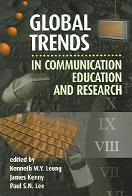The English-language U.S. media -- and their audiences -- may have been surprised by the depth and breadth of this week's demonstrations against proposed immigration legislation. But Spanish-language media outlets had been publicizing and promoting them for weeks, reports the Associated Press.
AP reporter Gillian Flaccus describes some of the many ways Hispanic radio and TV stations in California and across the country brought the immigration issue to their listeners and viewers. (
Spanish-Language Media Rally Immigrants, 3/28/2006).
Another article, distributed nationally by the
Washington Post, told how normally competitive Spanish-language radio stations in Los Angeles came together to promote the march in that city.
The LA effort included "conference calls that featured disc jockeys from competing stations discussing the immigration bills and the Senate's upcoming debate."
The work of the Spanish-language stations, reports the
Post, "was also mirrored by Radio Seoul, the 24-hour Korean-language station in the city, which aired similar spots exhorting this city's 1 million Koreans to take to the streets." (
Grass-roots movement of immigrants hopes to sway debate, 3/28/2006).
In Georgia, reported the
Atlanta Constitution last week, Spanish-language radio stations helped spur protests against an anti-illegal immigration bill making its way through the state legislature.
The organization leading the protest, Alianza 17 de Marzo de Georgia, or March 17th Alliance of Georgia, is named for the date pastors and Spanish-language media executives met to plan action against the proposed legislation. (
Latinos urge day of protest against bill, 3/24/2006)
For more on immigration and the foreign-language media in the U.S., here are some selected sources.
- Hispanic Media Survey This 2004 report from the Pew Hispanic Center looks at where Latino/Latinas in the United States get their news and how the sources of news influence their views on a wide range of topics. Among the findings: Latino/as who get their news from English-language sources have less favorable views of undocumented immigrants than do those who get their news from Spanish-language sources.
- Assimilation or Identification? Exploring the Role of the Ethnic Press, by John Hatcher, Syracuse University. This paper from the 2005 conference of the International Communication Association, uses a case study comparison to explore the role of four ethnic and immigrant newspapers in New York City. Among the findings: "ethnic and immigrant newspapers may do more to help define and unify ethnic and immigrant groups than to help them adapt to a new culture, as previous research has suggested." (BC login necessary off campus)
- Ethnic News Watch. Use this database to see how ethnic newspapers and magazines in the United States have covered immigration policy issues. There are many ways to search. One suggestion: search for "immigration policy"; sort the results by most recent first; then click on newspapers. You'll get articles from such publications as El Diaro La Prensa, Mundo Hispanico, Filipino Reporter, Irish Voice, India Abroad, and many others. (BC login necessary off campus)
 The 2nd edition of the Encyclopedia of Language & Linguistics (2006), new to the O'Neill reference collection, offers many articles of use to communication students.
The 2nd edition of the Encyclopedia of Language & Linguistics (2006), new to the O'Neill reference collection, offers many articles of use to communication students.





